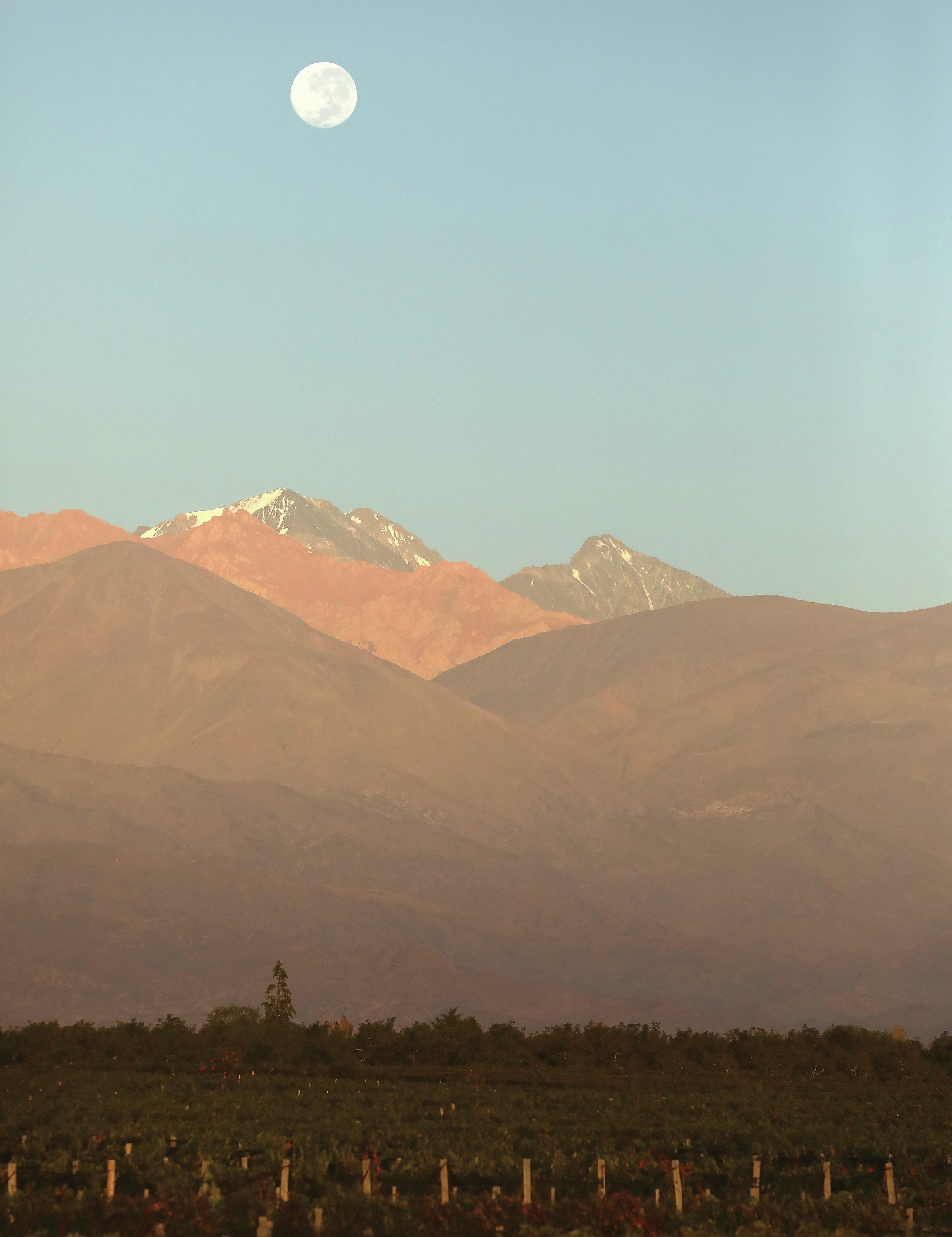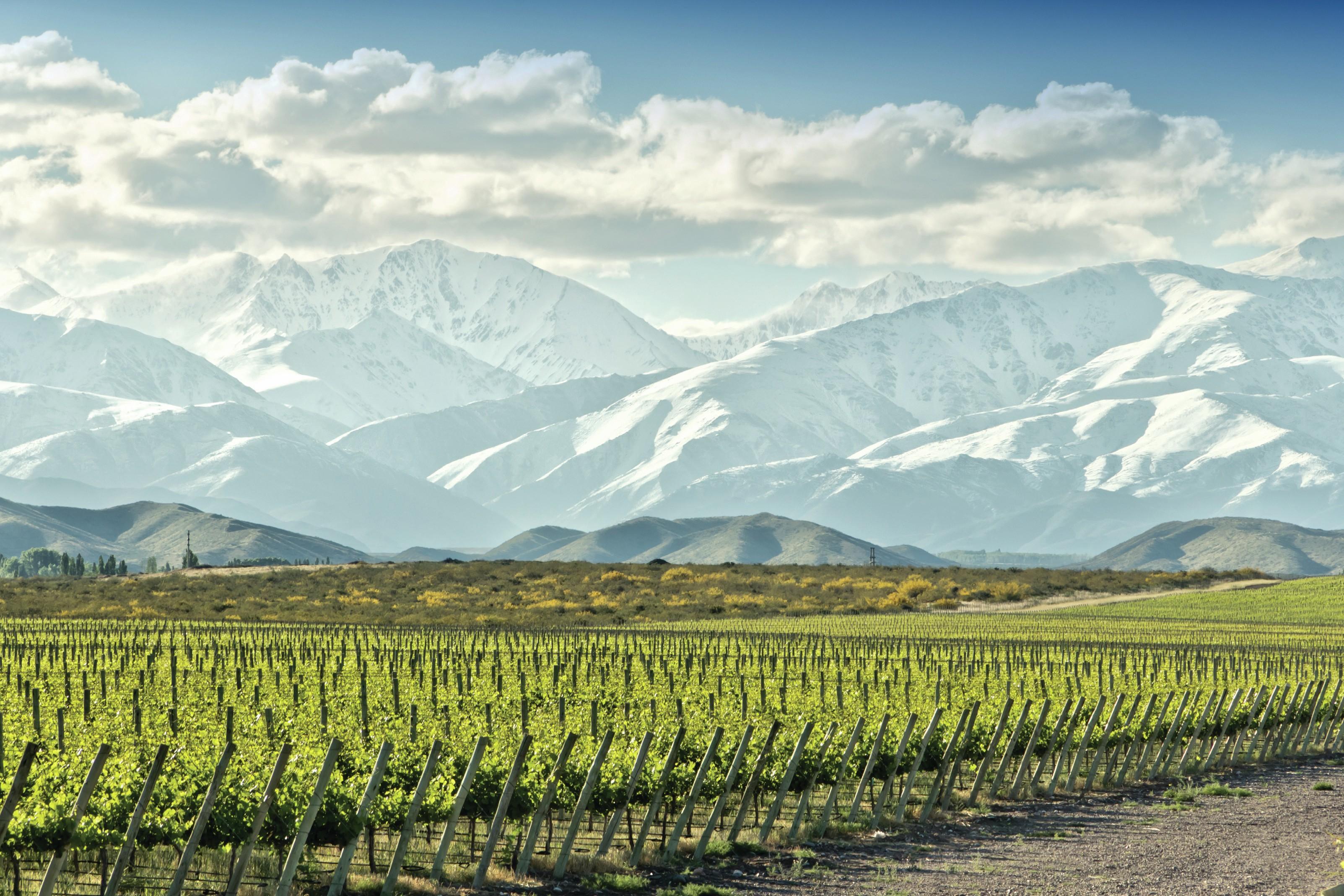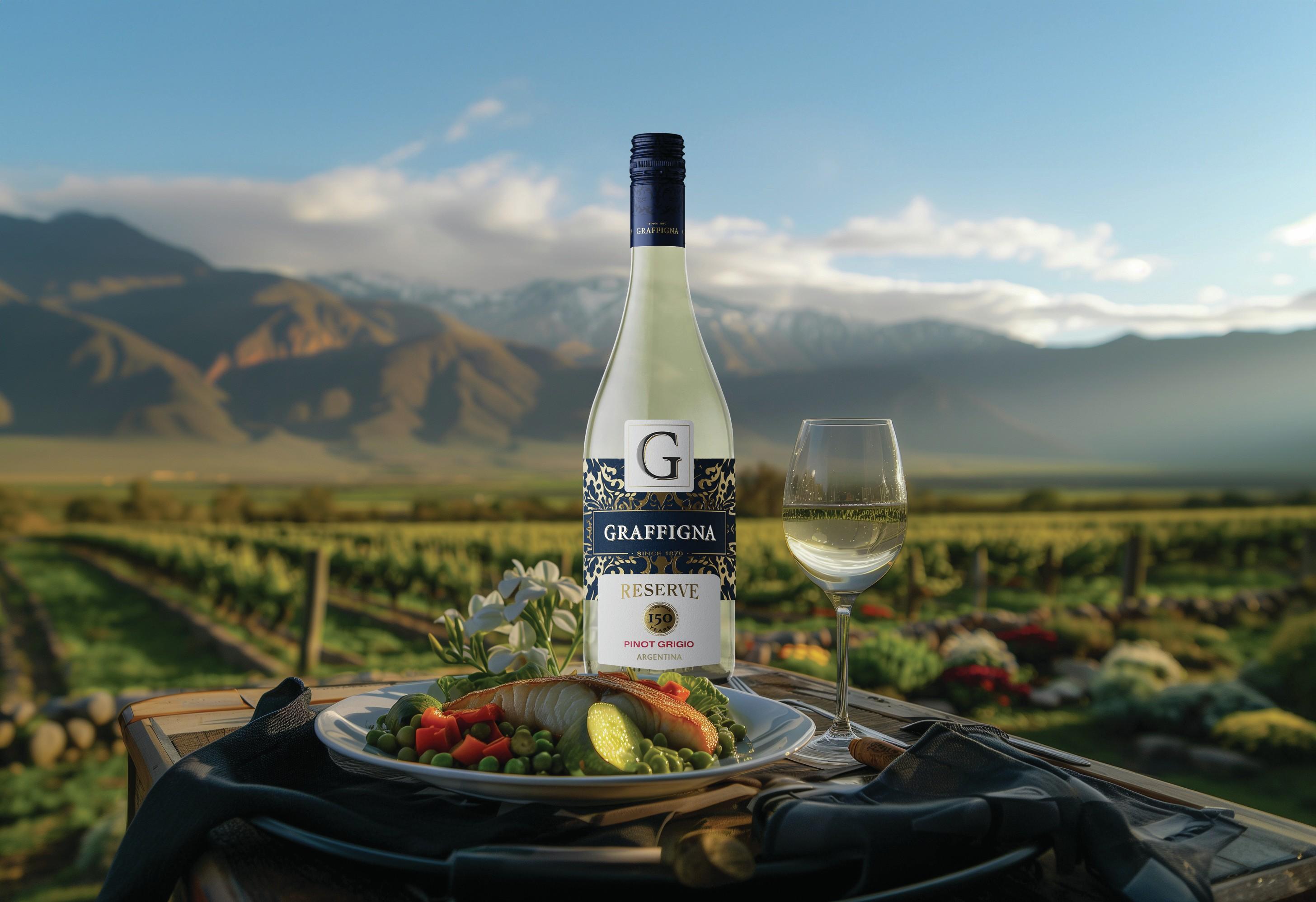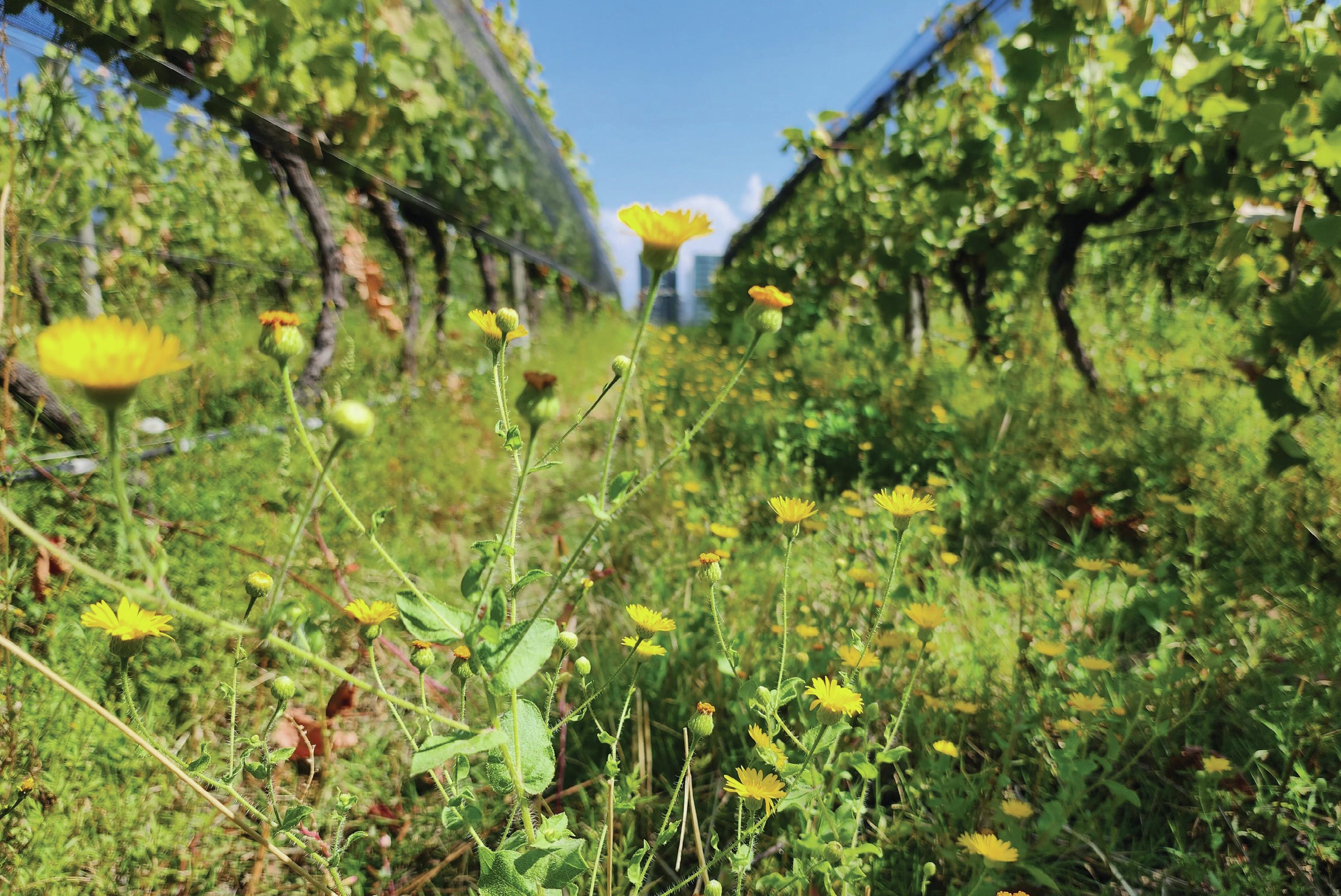Why this summer is all about Argentina whites
Argentina may be red wine country, but its whites are taking on a focused, fresh and distinctive personality, reports Amanda Barnes.

THERE IS no question that land under vine in Argentina is still heavily dominated by red grape varieties. Only 12% of the country’s vineyards are planted to white grapes, according to the National Viticulture Institute (INV).
However, winemakers are increasingly excited about the potential for great white wines coming from across the country, and these have the potential to provide a fresh new face for Argentinian wine.
While the general trend in Argentina shows diminishing plantings of white varieties and a drop in white wine exports since 2012, the reality is more complex. The INV’s latest report on white wine production says that “2012 was the year of the biggest wine exports in the whole century”, adding: “There was an enormous exportation of Moscatel de Alejandria to the US, which didn’t ever happen again.”
The Moscato boom was short-lived and, in fact, since 2018 white wine exports have been steadily rising again – from less than 278,000 hectolitres in 2018 to more than 404,000hl in 2021. The dire economic situation over the past couple of years in Argentina has stalled growth in almost all wine categories, but there are several key white wine trends that continue to build Argentina’s reputation as a white wine producer to watch.
Argentinian Chardonnay has been the biggest winner in recent years. Between 2012 and 2021, exports grew by 24%, making the variety the third-most exported variety of all, accounting for 6.8% of volume (after Malbec with 64.3%, and Cabernet Sauvignon with 8.9%), according to the INV in 2022.
What is most exciting about Argentinian Chardonnay is the great leaps in quality that have taken place in the past few years, with winemakers ever more focused on the regional expression and distinction of their Chardonnay wines. The Uco Valley, and most notably the subregions of Gualtallary, Paraje Altamira and San Pablo, are leading this movement, but there are also superlative wines coming from Chubut (especially from Bodega Otronia) and Río Negro (especially from Chacra).
“I see enormous potential in Argentina’s Chardonnay,” concurs Ernesto Bajda, winemaker at Catena Zapata, which is at the forefront of the wave of premium Chardonnay wines in the Uco Valley. “It is a variety that has a very ample capacity to adapt, but at the same time it shows very different expressions based on the place – and, in particular, based on the soils. And if there is one thing that we have in the Uco Valley, it is great variation of soils.”
One of the best examples of terroir-driven Chardonnay wines in Argentina is Catena Zapata’s White Bones and White Stones duo – both sourced from the same vineyard in Gualtallary and made with the same vinification techniques, but radically different in profile, texture and aromas.
“White Bones and White Stones come from the same block of vines, and are planted with the same selection of Chardonnay, but the different soils have a huge impact on the different expressions,” explains Bajda.
“One of the key aspects to this great potential for Chardonnay that we have [in the Uco Valley] is the high quantity of calcium carbonate in different forms and concentrations, and combined with different soils and textures. In tandem with the cool climate we have in Uco, the wines have great natural acidity, and show citrus and floral characters.”
This drive in contemporary wines from the high-altitude vineyards of the Uco Valley is redefining the region as one capable of making some of the New World’s greatest Chardonnays.
TORRONTÉS GROWS UP
Meanwhile, as international markets continue to learn more about Argentina’s native Torrontés, this grape variety has seen a steady growth in sales and reputation. Between 2012 and 2021, export volumes climbed by 5.6%, leaving Torrontés Riojano wines as the secondmost exported whites after Chardonnay, and the fourth-ranking export of all grape varieties in Argentina, accounting for 2.3% of volumes in 2022.
Part of its recent success has been due to the notable advances in winemaking and understanding of the variety. “It is an amazing variety, although it can be difficult to work with – it can be bitter, and you need very good [winemaking] technology,” says Susana Balbo, who is known as the Queen of Torrontés for all her work with the variety both in Salta and in Mendoza.

In Salta during the 1980s and 1990s, Balbo revolutionised white winemaking in Argentina, and propelled the variety from being a simple, often flabby wine to creating the fresh, aromatic and lively white expressions Torrontés is best-known for today. Now based in the Uco Valley, Balbo continues to push the boundaries for Torrontés by planting new vines in some of the most prized terroirs of Mendoza – Gualtallary and Paraje Altamira. Here she is making complex, age-worthy Torrontés wines fermented and aged in French oak.
Balbo previously told the drinks business that “the idea of ageing Torrontés is very new as people think it becomes too bitter”. She revealed that in order to tease out the ageing potential, she had been experimenting with a revolutionary method of toasting the barrels, using hot air rather than fire, based on a prior research project carried out by the Australian Wine Institute. Balbo adopted the same technology in her winery in 2008 and credits the gentler toasting technique with helping her to “achieve a better balance” in her
Torrontés. “It costs around €800 per machine, but it allows the wine to evolve better over the years, and the flavour it imparts is like the wine has not been oak-aged at all,” said Balbo, who now chooses from five different temperatures to heat the wood used for her Torrontés wines.
“The higher the temperature, the stronger the flavour of the oak, but I never age Torrontés for more than six months,” she added.
It is premium styles of Torrontés such as Balbo’s that are spurring the grape variety forward, and garnering great critical acclaim in the process. Other notable apostles include producers El Enemigo, Colomé and Piatelli.
Partner Content
Old vine revival
Amid the thrilling renaissance of old vines in Argentina, there are a host of excellent wines being made from Semillon. In particular, the Semillons of Mendel, Michelini i Mufatto, Matías Riccitelli Wines and Escala Humana are at the forefront.
There has also been an exciting revival of old-vine Riesling from Río Negro, as well as new plantings of this variety, most notably in the Uco Valley. “Riesling develops really well in Gualtallary, and has great ageing potential due to its balance between high acidity and sugar,” says Cristóbal Undurraga, wine director at Doña Paula.
“It shows these very exotic aromas of tropical fruit, mandarin, honey and a splash of citrus, and has an elegant structure with a marked minerality on the finish due to our alluvial, calcareous soils.”
Undurraga adds that the older vintages of this relatively new project are showing particularly well: “Our Altaluvia 2019, which is already over five years old, is a wine that is only just starting to show its tertiary aromas, which play out really well with this variety.”

Exploring lesser-known varieties with strong acid structures is also key to the exciting new movement of whites. “I really believe we need to continue introducing new white varieties to Argentina — we have the space and conditions for them,” says David Bonomi, head winemaker of Norton.
“The diversity of regions that we have is a key factor – from the very north of Argentina down to Patagonia, and from the Andes to the Atlantic Ocean, this allows us to have a great diversity in production. But we always need to keep in mind that these specific places combine climate and soil, which need to be accompanied by varieties that adapt well there and reflect the character of each place.”
Explorations into varieties as diverse as Albariño, Verdejo, Fiano and Roussanne are just a few of the new white wine adventures happening around Argentina. Norton, for its part, is backing Grüner Veltliner as a potential future avenue for Argentinian white wine.
“Grüner Veltliner has been a great discovery for us,” says Bonomi. “We have planted it in very diverse regions and with very different objectives. It is extremely versatile, capable of making sparkling and still wines, and from youthful wines to our top expression Lote Blanco – which is a wine with great ageing potential.”
Domaine Bousquet, on the other hand, is backing Sauvignon Blanc, and last year made its first “super-premium” white wine from hand-selected parcels of this variety with just a short time spent in barrel: Ameri Eva Estate Parcel #9 Organic Sauvignon Blanc.
Even softer-structured varieties can take on a refreshing mountain influence, and Pinot Grigio has been one of the fastest-growing white grape varieties in Argentina, with plantings increasing by 39% between 2014 and 2023, up to a total of 525 hectares. It comes sixth in the ranking of Argentina’s highest-value exported grape varieties.
“Pinot Grigio is significantly influenced by the Andes here,” says winemaker Fernando Mengoni, whose Graffigna Pinot Grigio (pictured above) has found a strong market in the UK – earning a listing at supermarket Sainsbury’s in 2023. “It shows a balanced profile with freshness and elegance.”

It’s not only single-varietal white wines that have seen a leap in improvement. in Argentina. Innovative white blends are also on the rise.
Although field blends of white grape varieties, potentially mixed with some pink and red varieties too, is one of the most traditional ways of making wine in Argentina, there is new excitement surrounding the potential being unleashed in white blends. Stellar examples can be found from all over the country, with notable Torrontés blends coming from Salta – including Amalaya’s deliciously floral and oily blend of Torrontés and Riesling; and El Esteco’s blanc de blancs combining Torrontés with Chardonnay, Viognier, Marsanne and Roussanne.
Torrontés is also a key component in the renowned White Blend of Susana Balbo from the Uco Valley – where it is combined with Sauvignon Blanc and Semillon. Indeed, the Uco Valley has become the Mecca of this white blend trend, and Semillon and Sauvignon Blanc are often key components, as in the case of Alandes, Ruca Malen, Kaiken and Trivento’s white blends. One of the first white blends to come on the market from the Uco Valley was Piedra Negra’s Gran Lurton Corte Friulano, which blends Sauvignon Vert with Sauvignon Blanc. In Gualtallary,
Domaine Bousquet also uses some Sauvignon Blanc within its Gaia blend, which is dominated by Chardonnay and blended with Pinot Gris.
In the deep south, Pinot Gris makes up a significant part of the blend of Otronia’s 45 Rugientes Corte de Blancas, which is distinctly Alsacian in style, with the addition of some Gewurztraminer, Riesling and Chardonnay.
Taking a different tack, there is also handful of excellent Rhône-style white blends, often with Marsanne, Roussanne and Viognier, but also occasionally with Chardonnay and the native Pedro Giménez variety. Notable producers of these Rhône-style blends include Ver Sacrum, Onofri Wines, Corazon del Sol and Matervini – all in Los Chacayes, where the ‘Rhône movement’ is under way in both red and white wines.
With a wide range of exciting expressions from around the country, the white wines of Argentina really are showing the creativity and innovative spirit of its winemakers.
Related news
Balcarce: what you need to know about Argentina's fledgling wine region
How can Argentina’s native grape hit the big time?
‘Argentina is more than Malbec’: Global buyers rethink Mendoza at Vinexpo Explorer 2025




